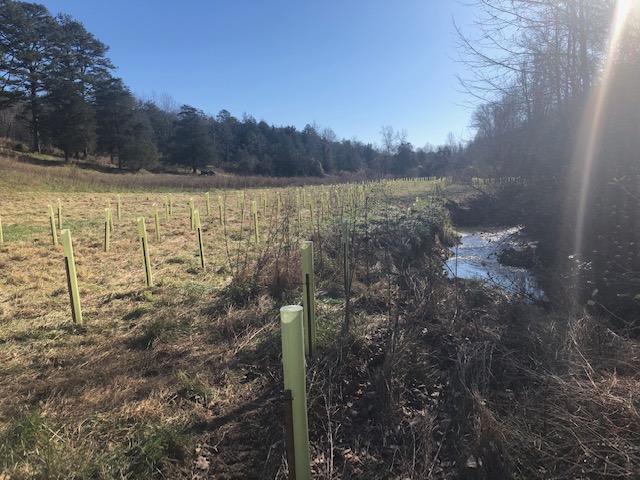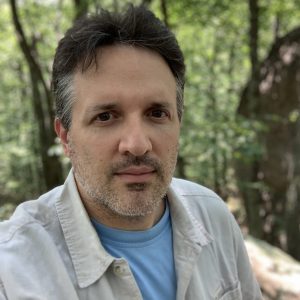
The James River Association, Virginia Department of Forestry and Chesapeake Bay Foundation are partnering to plant 1,377 acres of trees along streams and rivers in the Middle and Upper James watersheds — and VOF easement owners can help.
The James River Buffer Program, established in 2019, pays for 100 percent of the project costs for qualifying landowners who restore or create forested stream buffers in the area of eligibility. Once an application is accepted, program staff conduct a site assessment and discuss the landowner’s priorities. A buffer design is created for the landowner’s approval, and then trees are planted in the early spring or late fall. The buffer must be maintained for at least 15 years. VOF easement owners may amend their easement to permanently protect the buffer, and the program will cover those costs, as well.
One VOF easement owner has already signed up. Warren Byrd and Susan Nelson planted 424 seedlings along Spring Creek on their Albemarle County easement this past fall. Among the 15 native species planted were buttonbush, elderberry, persimmon and red maple.
“The site for the riparian buffer planting along Spring Creek is in an old field that was once a grazing pasture,” they explain. “Because the creek banks in the old field are so severely eroded now and sediment is washing down stream, planting a riparian buffer we felt would be an effective and environmentally sustainable solution, filling a serious gap in the existing forested edge along the stream corridor.”
Anne Marie Roberts of the James River Association coordinated the work at Spring Creek Farm, with help from the Virginia Forestry and Wildlife Group and Conservation Services, Inc.
“The stream section that we planted at Spring Creek Farm was especially important to plant, since it has little or no streamside forest and has actively eroding stream banks,” she says. “In this particular case, planting seedlings next to the banks will reduce sedimentation into the stream and increase water quality for aquatic life by providing future shade, as well as a food source.”
Since 2019, more than 81,000 trees have been planted on 228 acres in the Middle James watershed. Work in the Upper James began in 2020 and will be coordinated primarily by the Chesapeake Bay Foundation.
To learn more about the program and find out if your property is eligible to participate, visit https://www.jamesriverbuffers.org/.
